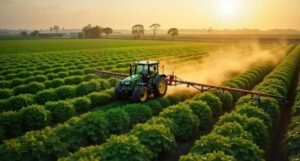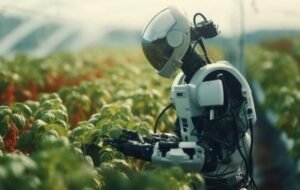What Technology is Used by Farmers?
Farming has always been at the heart of human civilization, but the methods and tools farmers use have evolved drastically over the years. Today, technology plays a crucial role in agriculture, helping farmers increase productivity, reduce environmental impact, and manage resources efficiently. From precision farming to automation, the use of modern technology in agriculture is transforming how food is grown and delivered to our tables. In this article, we’ll explore the key technologies used by farmers today.
1. Precision Agriculture
This technology enables farmers to monitor and manage field variations in crops, soil, and climate conditions with great accuracy.
GPS and GIS (Geographic Information Systems): These tools help farmers map fields, track machinery, and optimize planting and harvesting routes. They also enable variable rate application of inputs like fertilizers and pesticides, reducing waste and improving yield.

Drones: Unmanned aerial vehicles (UAVs) are used for surveying large fields, capturing real-time images, and identifying crop health issues like pest infestations or nutrient deficiencies.What Technology is Used by Farmers? Former technology
Soil Sensors: These provide real-time data on moisture levels, pH, and nutrient content, helping farmers make data-driven decisions on irrigation and fertilization.
2. Farm Management Software
Farmers today rely on digital platforms and software to keep track of daily operations, finances, crop cycles, and labor. These systems offer dashboards, analytics, and alerts that help manage farm productivity.
Software like John Deere Operations Center, Trimble Ag Software, and Farm log provide planning tools, historical data, and performance tracking.
Mobile apps allow farmers to manage operations on the go, monitor weather forecasts, and even control machinery remotely.
3. Automated Machinery
Mechanization has always played a vital role in agriculture, but modern automated and smart machinery takes it a step further by minimizing the need for manual labor.
Autonomous tractors: These self-driving vehicles are guided by GPS and can perform tasks like plowing, seeding, and harvesting with minimal human intervention.What Technology is Used by Farmers?
Robotic harvesters: These are used for picking fruits and vegetables with precision, reducing damage and improving efficiency.
Planters and seeders: Equipped with smart sensors, they ensure optimal seed placement and spacing, which boosts crop yields.
4. Irrigation Technology
Efficient water use is critical in farming, especially in regions facing water scarcity. Modern irrigation systems ensure that crops receive the right amount of water at the right time.
Sprinkler Systems: These simulate rainfall and are widely used in fields with uniform crops.
Smart irrigation controllers: These devices adjust watering schedules based on real-time weather data and soil conditions, reducing water waste and energy consumption.
5. Biotechnology
Biotechnology is revolutionizing agriculture by improving crop resistance, productivity, and nutritional value.
Genetically Modified Organisms (GMOs): These are crops modified for traits like pest resistance, drought tolerance, or faster growth. Examples include Bt cotton and golden rice.What Technology is Used by Farmers?
CRISPR Gene Editing: This allows precise editing of plant DNA to enhance desirable traits without introducing foreign genes.
Bio-fertilizers and bio-pesticides: Environmentally friendly alternatives that use natural organisms to boost crop health.
6. Internet of Things
The Internet of Things (IoT) connects various farm devices and sensors to the internet, enabling automation and data collection in real time.
Smart greenhouses users Not to control temperatures, humility, and lighting automatically.
Data from IoT devices can be integrated into farm management software for better insights and decision-making.
7. Artificial Intelligence and Machine Learning
AI and ML are being increasingly integrated into agricultural practices to predict crop outcomes, detect diseases, and optimize resource use.

AI-powered drones and cameras can identify pests and diseases before they become widespread.What Technology is Used by Farmers?
Yield prediction models use historical data and weather patterns to estimate future harvests.
Chatbots and virtual assistants can answer farmers’ queries in real-time and provide farming advice.
8. E-commerce and Digital Marketplaces
In addition to growing food, farmers now use technology to sell their products directly to consumers and businesses.
Platforms likes Agri bazaar, DeHaat, and Ninja cart connectivity farmer’s with buyer’s, reducing there needs for middlemen.
Blockchain technology is being used to track produce from farm to table, ensuring transparency and traceability.
9. Renewable Energy
Many farmers are adopting solar, wind, and bioenergy technologies to power their operations and reduce reliance on fossil fuels.
Solar-powered pumps for irrigation
Biogas plants for converting animal waste into energy What Technology is Used by Farmers?
Wind turbines on farms to generate electricity
Conclusion
Technology has become a powerful ally for modern farmers, helping them tackle the challenges of climate change, population growth, and resource limitations. From data-driven farming and robotics to biotechnology and smart marketplaces, these innovations are reshaping the future of agriculture. As technology continues to evolve, farmers who adopt and adapt to these tools will be better positioned to thrive in an increasingly competitive and dynamic agricultural landscape.
